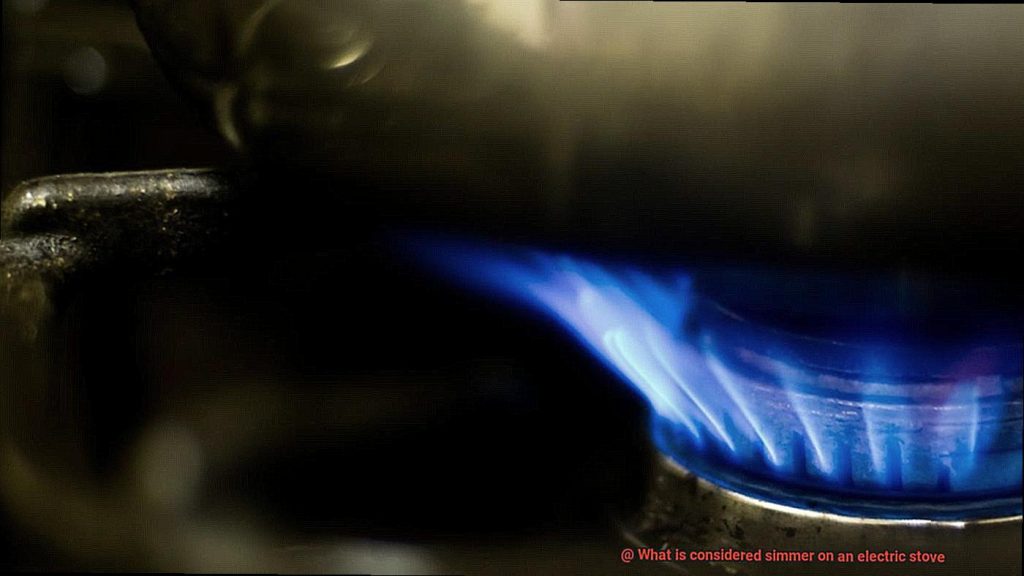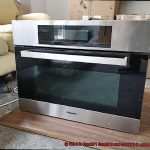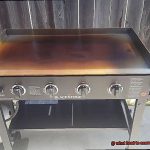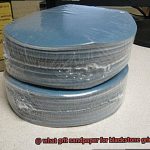Have you ever found yourself scratching your head in front of your electric stove, wondering what the heck “simmer” really means? Maybe you’re trying out a new recipe or attempting to avoid overcooking your favorite soup. Fear not, we’ve got your back. In this blog post, we’ll delve into the ins and outs of what is considered simmer on an electric stove.
Simmering is much more than just cooking on low heat. It’s a specific technique that can make or break a dish. You need patience and a keen eye as the temperature must be maintained just below boiling point. If it’s too hot, your food could end up burnt or mushy; if it’s too cold, you won’t achieve the desired texture.
We will guide you through recognizing a simmer, including the tell-tale bubbles that appear on the surface of your liquid. We’ll also provide tips for adjusting your electric stove to achieve the ideal temperature range. And because we know how frustrating it can be to wait around for your food to cook, we’ve even included some recipes that are perfect for simmering – from stews and broths to sauces and soups.
Whether you’re an experienced home cook or just starting out, understanding how to simmer can take your culinary game up a notch and impress your dinner guests. So let’s dive in.
Contents
Why is Simmering Important?
Simmering is a magical cooking technique that can transform simple ingredients into mouth-watering dishes. It involves gently cooking food in liquid just below the boiling point and is a crucial step in many recipes, such as soups, stews, and sauces. But why is simmering so important? Let’s dive into the reasons why this technique is a game-changer in the kitchen.
Firstly, simmering allows the flavors of the ingredients to meld together slowly and uniformly. The result is a dish with a depth of flavor that cannot be achieved through other cooking methods. Every bite of your dish will have a consistent and balanced flavor profile. High temperatures can cause some flavors to become overpowering or unevenly distributed, but simmering ensures that your dish has a harmonious taste.
Another reason why simmering is important is that it tenderizes tough cuts of meat. The low temperature breaks down connective tissues in the meat, resulting in a tender and succulent texture. If you’re looking to make a delicious pot roast or beef stew, simmering is an essential step. Plus, you can infuse the meat with additional flavors by adding herbs, spices, or wine to the liquid.
Simmering also allows you to cook food without drying it out or burning it. By maintaining a low temperature, you can ensure that the food stays moist and doesn’t stick to the bottom of the pot or pan. This is particularly important when making delicate sauces or custards that require gentle heat to thicken properly.
To achieve the best results when simmering, there are a few tips to keep in mind. Use the right size pot or pan for the amount of food you’re cooking and make sure it has a thick bottom that distributes heat evenly. Set your burner to the appropriate temperature and keep an eye on your food while it simmers. You don’t want the liquid to boil too vigorously, as this can cause your food to break apart or become tough.
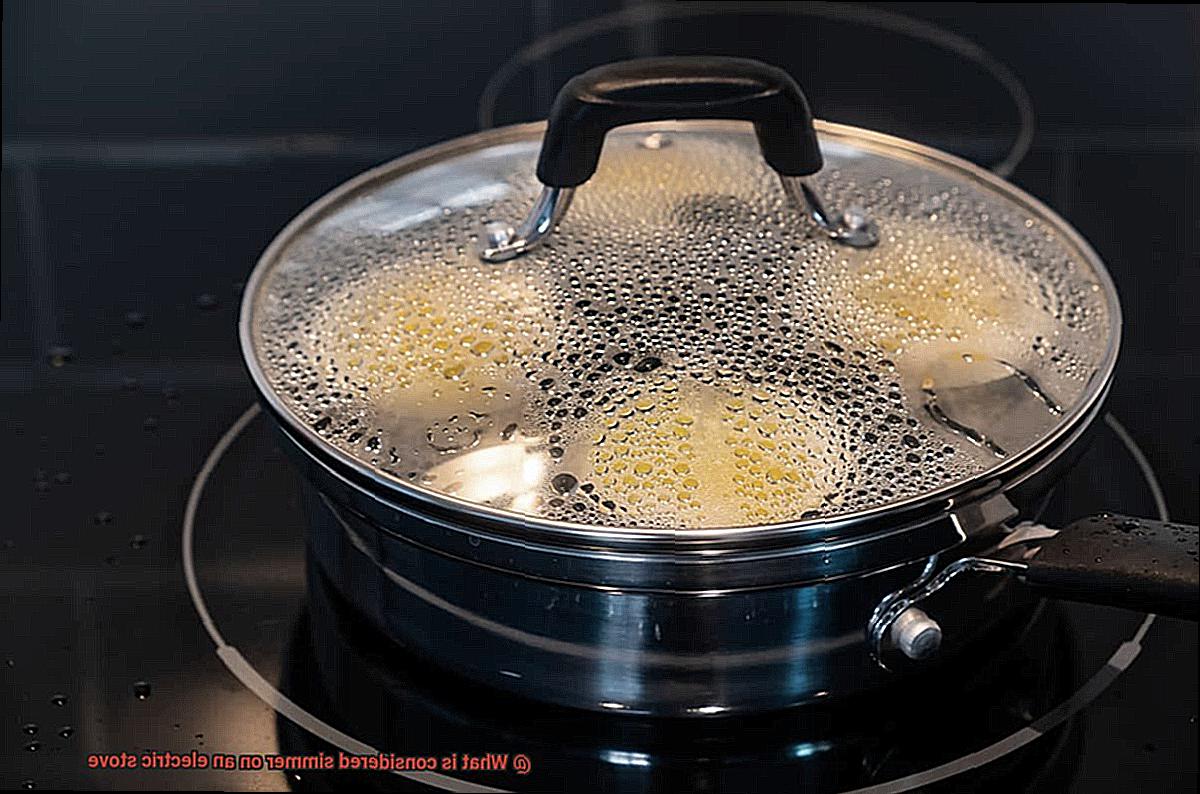
How to Simmer on an Electric Stove
Simmering food on an electric stove can be a daunting task, especially for beginners. However, with the right technique and approach, anyone can achieve the perfect simmer on an electric stove. In this guide, we will take a closer look at the steps involved in simmering on an electric stove.
Choosing the Right Burner
The first step in simmering on an electric stove is choosing the right burner. Most electric stoves have different-sized burners, and each burner has a specific heat setting. For simmering, you should choose a small or medium-sized burner as this will help you control the temperature better. Using a large burner for simmering can cause the liquid to heat up too quickly and evaporate too fast.
Adjusting the Heat
Once you have selected the right burner, it’s time to adjust the heat. Simmering requires low heat, which is typically between 180°F to 200°F. To achieve this heat level on an electric stove, set the burner to its lowest setting and allow it to preheat for a few minutes before adding the food.
Maintaining a Gentle Simmer
The key to achieving perfectly simmered dishes on an electric stove is maintaining a gentle simmer. This means that the liquid should be just below boiling point and should have small bubbles that rise slowly to the surface. To maintain a gentle simmer, keep an eye on your pot or pan while cooking. If you notice that the liquid is boiling too vigorously or evaporating too quickly, adjust the heat down slightly. On the other hand, if your liquid is not simmering at all, turn up the heat until you see gentle bubbles forming on the surface.
Choosing the Right Pot or Pan
Choosing the right pot or pan is also crucial when simmering on an electric stove. A heavy-bottomed pot or pan with a tight-fitting lid is ideal for simmering as it distributes heat evenly and prevents moisture from escaping. This helps to keep the food tender and flavorful.
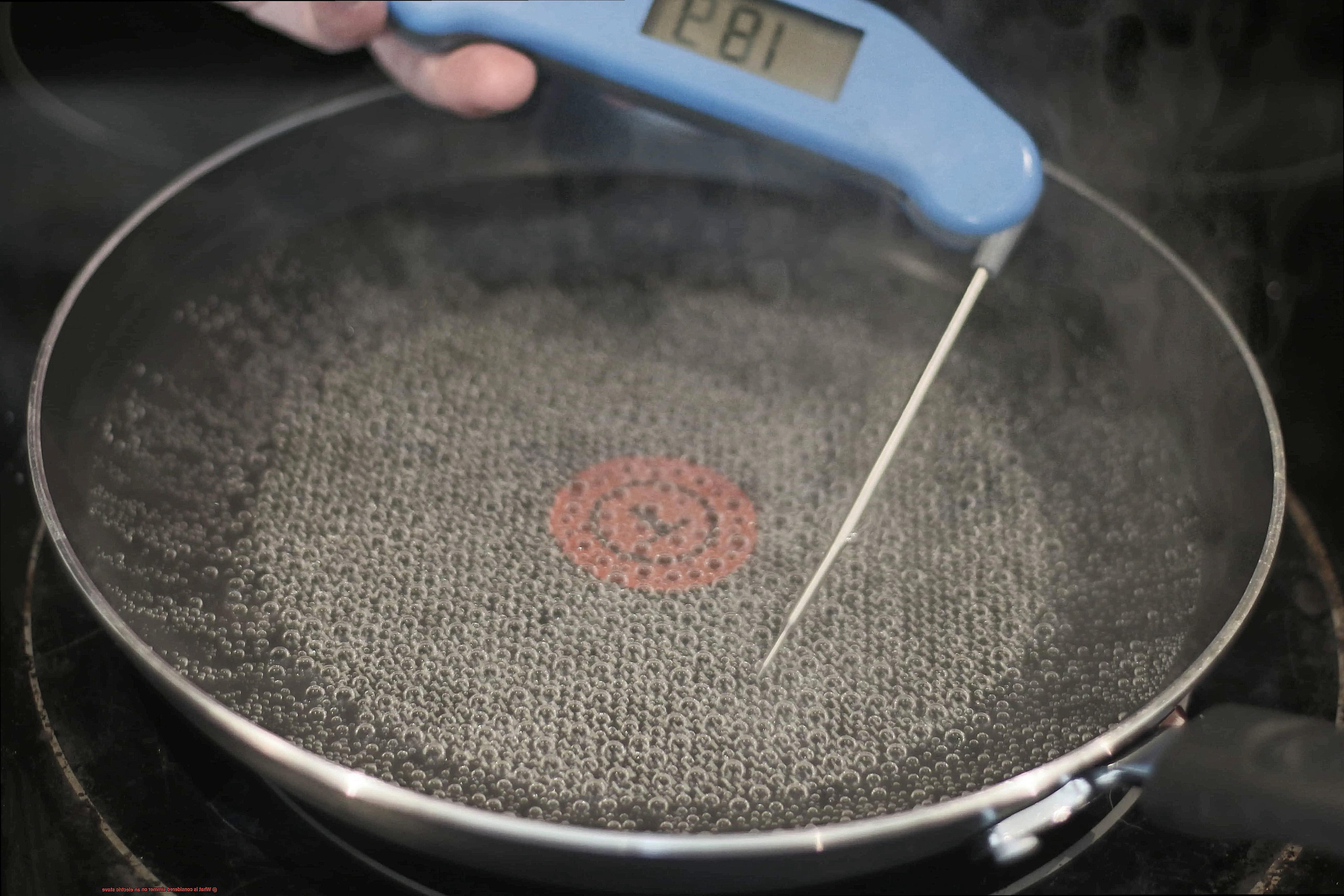
Avoiding Over-Stirring

While simmering, it’s important to avoid over-stirring the food. This can cause the food to break apart or become tough. Instead, gently stir the food occasionally to ensure that it cooks evenly.
Heat Settings on an Electric Stove
Simmering is a cooking technique that has been around for centuries. It is a slow and gentle cooking method where food is cooked in liquid at a temperature just below boiling point. Achieving the perfect simmer on an electric stove can be tricky if you don’t understand the different heat settings available.
Electric stoves typically have knobs or buttons that control the temperature of the heating elements. These knobs or buttons are labeled with numbers or heat settings, ranging from low to high, depending on the model and brand of the appliance. When it comes to simmering on an electric stove, it’s important to start with the lowest heat setting available. This is usually labeled as “low” or “simmer” and is typically around 200-250°F.
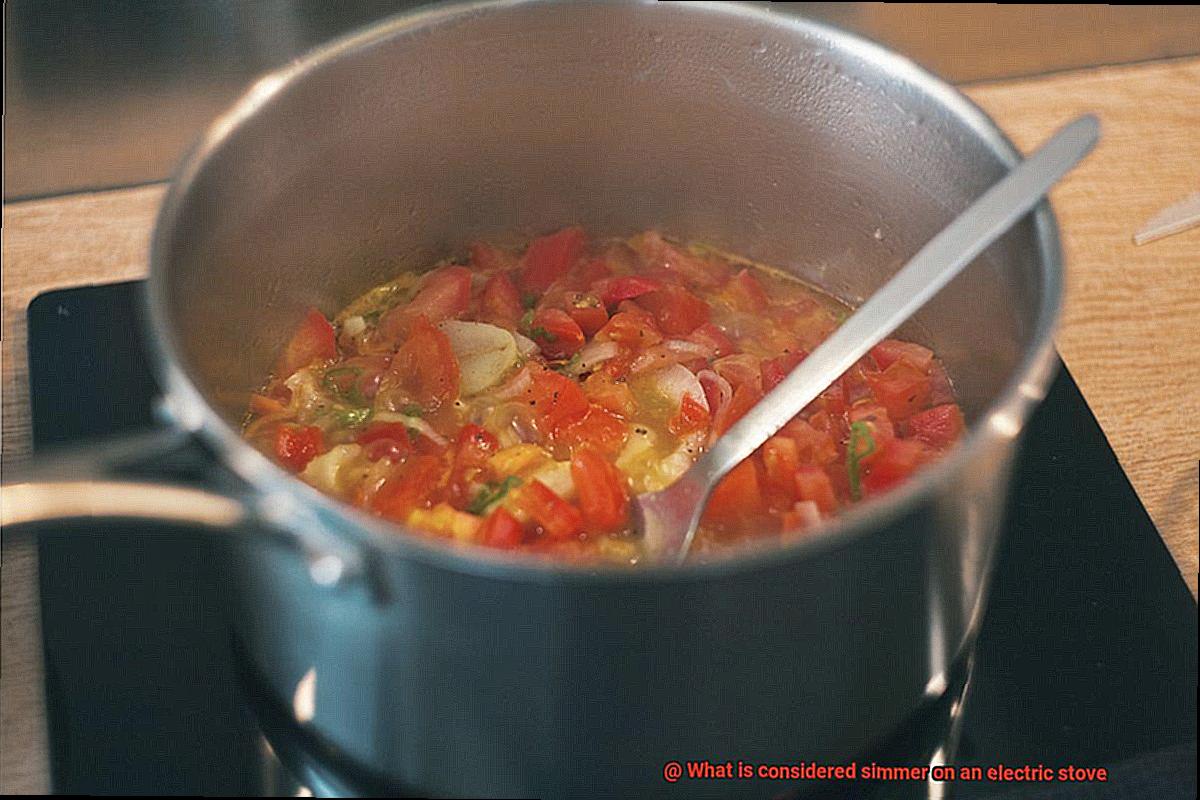
To achieve a perfect simmer, you need to use a pot or pan that is suitable for the task. A heavy-bottomed pot with a tight-fitting lid will help distribute heat evenly and prevent liquid from evaporating too quickly. Once you have your pot or pan ready, adjust the heat setting to the lowest setting and wait for the liquid to come to a gentle boil. Once it reaches boiling point, reduce the heat to the lowest setting and let it simmer gently.
It’s essential to note that different electric stoves may have varying temperature ranges for their lowest heat setting. Therefore, you may need to adjust your technique slightly depending on your stove model and brand. Maintaining a steady simmer throughout the cooking process may require adjusting the heat slightly.
Selecting the Right Pot or Pan for Simmering
Simmering is a cooking technique that requires a low and steady heat, making it essential to select the right pot or pan for the job. If you’re an electric stove user, this choice becomes even more critical. But don’t worry, as an expert in this area, I have compiled some research notes to help you choose the perfect pot or pan for simmering.
The first and most crucial factor to consider is thickness. A thick-bottomed pot or pan distributes heat evenly, avoiding hot spots that cause uneven cooking and scorching. Materials like stainless steel, copper, and cast iron are excellent choices for their superior heat distribution.
Size is also an important consideration. You want a pot or pan that is large enough to accommodate your ingredients without overcrowding, but not so big that there is too much empty space. Too much empty space can cause the liquid to evaporate too quickly, affecting the flavor and texture of the dish.
Finally, the shape of the pot or pan plays a vital role in achieving perfectly simmered dishes. A wider base allows for more even cooking and prevents overcrowding of ingredients. On the other hand, a taller and narrower shape helps retain moisture and flavor.
To summarize, selecting the right pot or pan for simmering on an electric stove requires careful consideration of factors such as thickness, size, and shape. By keeping these in mind when making your selection, you’ll be sure to achieve perfectly simmered dishes every time.
Maintaining a Gentle Simmer
Today, we’re going to explore the art of maintaining a gentle simmer on an electric stove. This skill is crucial for certain dishes and can make a big difference in the outcome of your cooking.
A gentle simmer is achieved when the liquid in your pot is just barely bubbling and steaming, without boiling rapidly. This allows your food to cook slowly and evenly without burning or overcooking. So, how do you master this technique?
Firstly, it’s essential to adjust the heat on your electric stove appropriately. Begin by turning up the heat to high until your liquid starts to boil. Then, immediately reduce the heat to a low setting and keep a close eye on your pot. If you notice that the liquid starts boiling too rapidly again, turn down the heat even further until you achieve a gentle simmer.

Another important factor in maintaining a gentle simmer is choosing the right pot or pan. Select a pot with a thick bottom and even heating, which will distribute heat evenly and prevent hot spots that can cause your food to burn or cook unevenly.
Using a lid on your pot is also crucial when maintaining a gentle simmer as it retains heat and prevents evaporation, keeping your liquid at a constant temperature.
To summarize, here are some key tips for maintaining a gentle simmer on an electric stove:
- Adjust the heat appropriately by starting high and then reducing to low
- Use a pot with a thick bottom and even heating
- Use a lid on your pot to retain heat and prevent evaporation

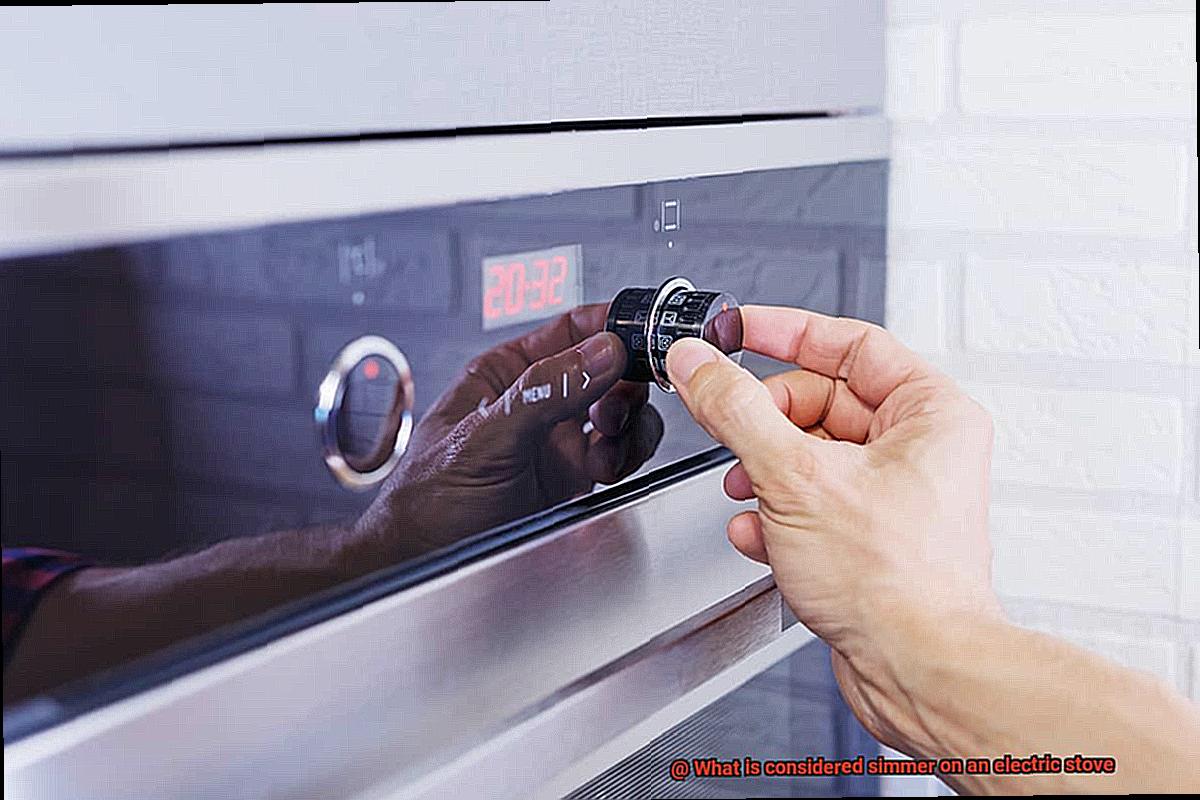
Tips for Perfectly Simmered Dishes Every Time
Simmering is an essential cooking technique for making soups, sauces, stews, and braises, but it can be challenging to get the temperature just right. Don’t worry; we’ve got you covered with these tips for achieving perfectly simmered dishes every time on your electric stove.
Choose the Right Size Pot or Pan
One of the most crucial factors to consider when simmering on an electric stove is selecting the right size pot or pan for your recipe. Using a pot that is too small will cause the liquid to evaporate too quickly, while using a pot that is too large will cause the liquid to spread out too thinly and not simmer properly. To ensure even cooking, choose a heavy-bottomed pot or pan that distributes heat evenly and prevents hot spots.
Use Low Heat
When simmering on an electric stove, it’s essential to avoid using high heat. Instead, set the heat to low or medium-low and wait for the liquid to come to a gentle boil before reducing the heat to a simmer. This will help you maintain the temperature and ensure your food cooks evenly without overcooking or becoming tough.
Keep an Eye on Liquid Levels
Another crucial tip is to keep an eye on the liquid level in the pot and add more liquid if it starts to evaporate too quickly. This will help prevent burning or sticking and ensure that your dish doesn’t dry out. It’s also important to remember not to dilute flavors by adding too much liquid.
Start with Cold Liquid
Starting with cold liquid allows the ingredients to heat up slowly and prevents them from becoming tough or overcooked. Bringing the liquid to a simmer gradually also helps maintain an even temperature and prevents boiling over. So, don’t rush the process and start with cold liquid.
Adjust Heat as Needed
Lastly, remember to adjust the heat as needed to maintain a steady simmer. If the liquid is boiling too rapidly, lower the heat slightly. If it’s not simmering at all, increase the heat gradually until you reach the desired temperature range. This will help you achieve perfectly cooked dishes every time.
Common Mistakes to Avoid When Simmering On an Electric Stove
Simmering may seem like a simple cooking method, but there are several common mistakes that can lead to less than perfect results. If you’re simmering on an electric stove, it’s important to keep these mistakes in mind so you can avoid them and achieve the best possible outcome.
Firstly, using the wrong burner size can lead to uneven heat distribution and ultimately, burnt or overcooked food. Make sure the size of your pot or pan matches the appropriate burner size for even heat distribution.
Another mistake is setting the temperature too high. Simmering requires low and slow cooking, so gradually adjust the temperature until you reach the desired level of simmering. Patience is key here.
Stirring your food is important to distribute heat evenly, but stirring too frequently can cause your food to lose its texture and fall apart. It’s best to stir occasionally and gently to avoid this mistake.
Lastly, covering your pot or pan while simmering is essential to trap steam and heat which aids in cooking your food thoroughly. Not covering your pot or pan can result in dry and undercooked food. So, don’t forget to cover up.
Benefits of Simmering on an Electric Stove
First and foremost, electric stoves provide consistent heat, making it easier to maintain a steady simmer without worrying about fluctuations in temperature. This is particularly important when cooking delicate dishes or sauces that require precise temperature control to avoid burning or overcooking.
But the benefits of simmering on an electric stove don’t stop there. It’s also a more energy-efficient way of cooking, as using a low heat setting allows you to cook your food slowly and evenly without wasting energy or overheating your kitchen. This is especially helpful during the summer months when you want to avoid adding extra heat to your home.
Moreover, simmering on an electric stove helps to retain the nutritional value of your food. High temperatures can destroy essential nutrients in your ingredients, but simmering allows your food to cook gently, preserving its natural flavors and nutrients. So you can enjoy healthier meals without sacrificing taste or texture.
And let’s not forget about the time-saving benefits of simmering on an electric stove. By preparing large batches of soups, stews, or sauces and letting them simmer for hours, you can have delicious meals ready to eat throughout the week. This is particularly helpful for busy families who want to enjoy home-cooked meals but don’t have the time to cook every night.
yij7fPSezS0″ >
Conclusion
In conclusion, simmering is a culinary art that can elevate your dishes from ordinary to extraordinary. This gentle cooking technique involves cooking food in liquid just below the boiling point and is an essential step in many recipes, such as soups, stews, and sauces. By slowly melding the flavors of the ingredients together, simmering creates a depth of flavor that cannot be achieved through other cooking methods.
Simmering also has practical benefits beyond taste. It tenderizes tough cuts of meat and keeps food from drying out or burning. However, achieving the perfect simmer on an electric stove requires some know-how. You need to choose the right burner size, adjust the heat appropriately, select the right pot or pan for the job, and resist over-stirring your dish.
Luckily, electric stoves provide consistent heat that helps maintain a steady simmer without worrying about temperature fluctuations. They are also more energy-efficient than other cooking methods and help preserve the nutritional value of your food.

